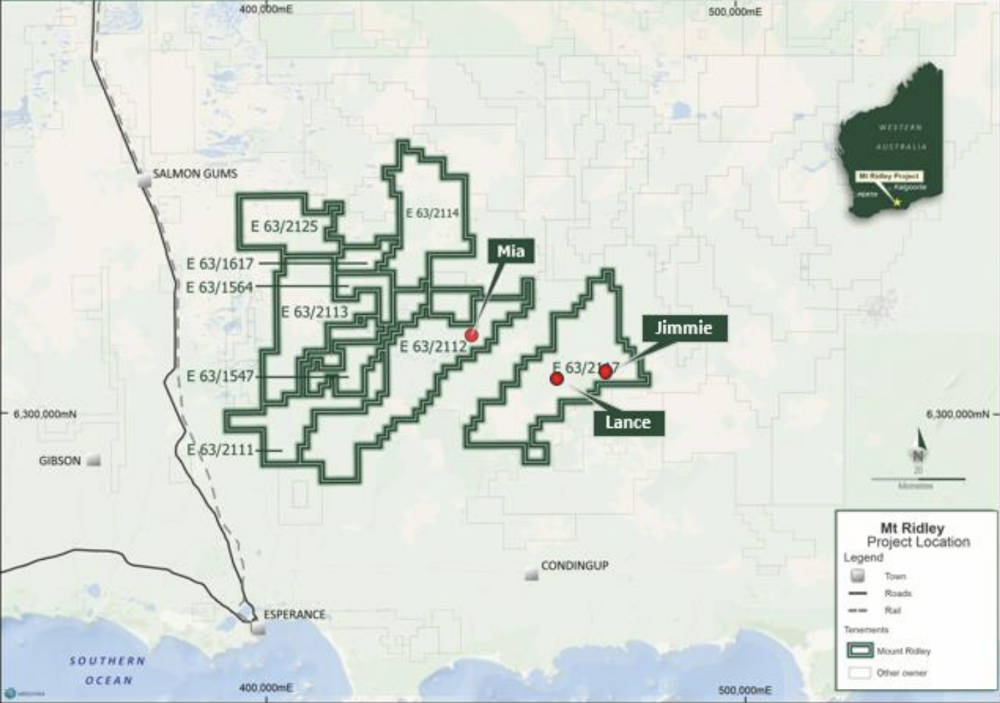Two new prospects add to the ‘prodigious extent’ of Mt Ridley’s rare earths project

Mount Ridley’s drilling in untested areas has returned thick intersections of REEs. Pic via Getty Images
- Mount Ridley Mines identifies two new prospects from drilling thick intersections of rare earths
- New REE intersections are amongst the highest to date at the project in WA’s Fraser Range
- Latest drilling tested clays overlying younger Nornalup Zone granites tested by companies such as OD6 Metals and West Cobar Metals
Special Report: Mount Ridley Mines’ drilling has outlined the potential scale of its namesake project in WA’s Fraser Range sub-basin after returning thick intersections of rare earths in previously untested areas.
While first acquired for its nickel and copper sulphide potential, the Mount Ridley project transformed into a significant critical minerals play following the discovery of clay-hosted rare earths deposits.
Work carried out by Mount Ridley Mines (ASX:MRD) has shown the REE mineralisation present within its 3,400km2 project has high percentages of neodymium and praseodymium (NdPr), dysprosium and terbium, which are used in the production of permanent magnets for electric vehicles and wind turbines.
Extraction rates of up to 72% of the total rare earth oxides (TREO) content were achieved at the key Mia and Vincent prospects using a simple hydrochloric acid leach, including up to 85% of these magnet rare earths.
New prospects identified
Drilling in the eastern-most tenement, E63/2117, has now returned thick REE intersections – some of the highest at the project to date – and defined the new Lance and Jimmie prospects.

Notable assays from the 36 holes completed within the tenement, which is about 12km east of the priority Mia prospect, include:
- 30m grading 2,026 parts per million (ppm) total rare earth oxides (TREO) with 20% magnet REEs (MREO) from a down-hole depth of 9m;
- 15m at 2,919ppm TREO (20% MREO) from 18m;
- 26m at 1,808ppm TREO (21% MREO) from 15m;
- 12m at 2,774ppm TREO (19% MREO) from 6m;
- 28m at 1,807ppm TREO (20% MREO) from 13m; and
- 17m at 1,498ppm TREO (24% MREO) from 9m.
MRD adds that while previous drilling had investigated clays overlying mid-Proterozoic-aged Biranup Zone granites and Grass Patch mafic rocks, the new results are the first testing clays overlying younger-aged Nornalup Zone granites, which have been the focus of exploration efforts at nearby projects held by OD6 Metals Limited (ASX: OD6) and West Cobar Metals Limited (ASX: WC1).
“The fact that drilling in untested areas is still locating new, high-grade zones underlines the prodigious extent of clay-hosted rare earth mineralisation at the Mount Ridley project,” MRD chairman Peter Christie said.
“It is noteworthy that almost all of the world’s critical heavy rare earths, in particular terbium and dysprosium, are sourced from clay deposits in China and Myanmar.
“As the Mount Ridley clay-hosted REE project advances, the potential for it to become an alternative source of these critical heavy rare earths is becoming more apparent.”
Future assays
MRD adds that it does not expect to receive and process assay results from October infill drilling over the Mia prospect before February 2024.
This drilling was designed to confirm the apparent continuity of high grade, clay-hosted REE mineralisation and is expected to augment the initial resource estimate.
This article was developed in collaboration with Mount Ridley Mines, a Stockhead advertiser at the time of publishing.
This article does not constitute financial product advice. You should consider obtaining independent advice before making any financial decisions.
Related Topics

UNLOCK INSIGHTS
Discover the untold stories of emerging ASX stocks.
Daily news and expert analysis, it's free to subscribe.
By proceeding, you confirm you understand that we handle personal information in accordance with our Privacy Policy.








